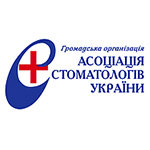STUDY OF THE ACTIVITY OF MARKERS OF LOCAL NON-SPECIFIC REACTIVITY AND THE LEVEL OF MICROBIAL CONTAMINATION IN THE ORAL FLUID OF PATIENTS WITH PERIIMPLANTITIES AGAINST THE BACKGROUND OF THE TREATMENT AND PREVENTION COMPLEX
DOI:
https://doi.org/10.35220/2078-8916-2024-53-3.6Keywords:
implants, biochemical markers, treatment and prevention complex, oral fluid, patients.Abstract
Peri-implantitis is a serious problem in modern dentistry, especially among patients with dental implants. The presence of comorbidities, such as periodontitis and atherosclerosis, can increase inflammation and complicate the course of the disease, causing a decrease in local nonspecific reactivity and an increase in microbial contamination. Purpose of the study. To evaluate the effect of a therapeutic and prophylactic complex of drugs on biochemical markers of local nonspecific reactivity and the level of microbial contamination (lysozyme and urease) in the oral fluid of patients with peri-implantitis. Materials and methods. The study involved patients with peri-implantitis aged 25 to 55 years. They were divided into groups: somatically healthy individuals, patients who received only basic therapy, and patients who additionally used a treatment and prophylactic complex that included drugs with antioxidant and anti-inflammatory effects, agents to restore microbiocenosis and microcirculation, and drugs with an osteotropic mechanism of action. In the oral fluid, urease and lysozyme activity were determined as indicators of microbial contamination and local nonspecific reactivity, respectively. Statistical analysis was performed using Student’s t-test at a significance level of p<0.01. Research results. In patients with peri-implantitis on the background of periodontitis and atherosclerosis, an increase in urease activity and a decrease in lysozyme activity in the oral fluid were found, indicating increased microbial contamination and weakening of local antimicrobial defense. The use of basic therapy led to a temporary improvement in these indicators, but later they returned to their original values. The additional use of the treatment and prevention complex provided a steady decrease in urease activity and an increase in lysozyme activity, bringing them closer to the levels of somatically healthy patients and maintaining positive dynamics throughout the year. Conclusions. The combined use of a therapeutic and prophylactic complex with basic therapy effectively normalizes biochemical markers of local nonspecific reactivity and the level of microbial contamination in patients with peri-implantitis in the setting of comorbidities. This confirms the feasibility of using this approach in clinical practice to improve treatment outcomes and prevent complications.
References
Halstenbach T., Nelson K., Iglhaut G., Schilling O., Fretwurst T. Impact of peri-implantitis on the proteome biology of crevicular fluid: A pilot study. J Periodontol. 2023. № 94(7). Р. 835-847. doi: 10.1002/JPER.22-0461.
Zhuang L.F., Watt R.M., Mattheos N., Si M.S., Lai H.C., Lang N.P. Periodontal and peri-implant microbiota in patients with healthy and inflamed periodontal and periimplant tissues. Clin Oral Implants Res. 2016. № 27(1). Р. 13-21. doi: 10.1111/clr.12508.
Canullo L., Radovanović S., Delibasic B., Blaya J.A., Penarrocha D., Rakic M. The predictive value of microbiological findings on teeth, internal and external implant portions in clinical decision making. Clin Oral Implants Res. 2017. № 28(5). Р. 512-519. doi: 10.1111/ clr.12828.
Marcantonio C., Nicoli L.G., Marcantonio Junior E., Zandim-Barcelos D.L. Prevalence and Possible Risk Factors of Peri-implantitis: A Concept Review. J Contemp Dent Pract. 2015. № 16(9). Р. 750-7. doi: 10.5005/jp-journals-10024-1752.
Canullo L., Peñarrocha M., Monje A., Catena A., Wang H.L., Peñarrocha D. Association Between Clinical and Microbiologic Cluster Profiles and Peri-implantitis. Int J Oral Maxillofac Implants. 2017. № 32(5). Р. 1054-1064. doi: 10.11607/jomi.6043.
Lumbikananda S., Srithanyarat S.S., Mattheos N., Osathanon T. Oral Fluid Biomarkers for Peri-Implantitis: A Scoping Review. Int Dent J. 2024. № 74(3). Р. 387-402. doi: 10.1016/j.identj.2023.11.005.
Методи дослідження стану кишечнику та кісток у лабораторних щурів : довідник / О. А. Макаренко та ін. – Одеса : Одес. нац. ун-т ім. І. І. Мечникова, 2022. 81 с.
Рогач І. М., Керецман А. О., Сіткар А. Д. Правильно вибраний метод статистичного аналізу – шлях до якісної інтерпретації даних медичних досліджень. Науковий вісник Ужгородського університету. 2017. Вип. 2. С. 124-28.









